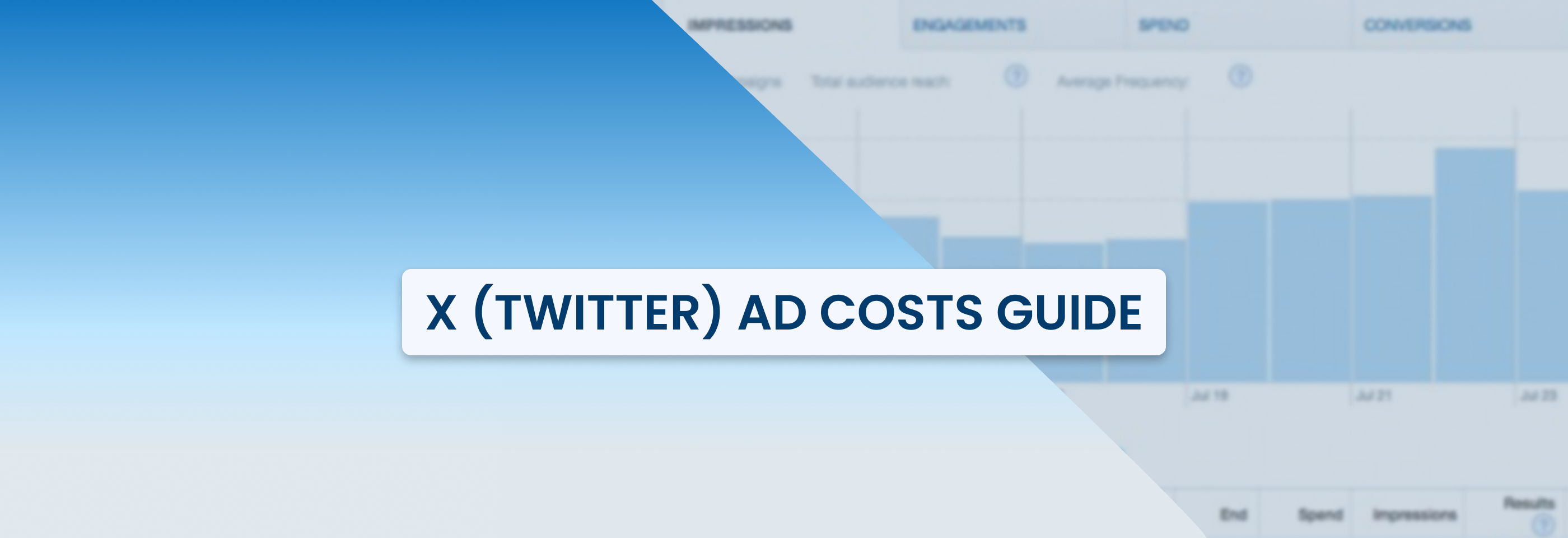How to Adapt to Shifts in X (Twitter) Advertising: Strategies for Success
2024-11-30
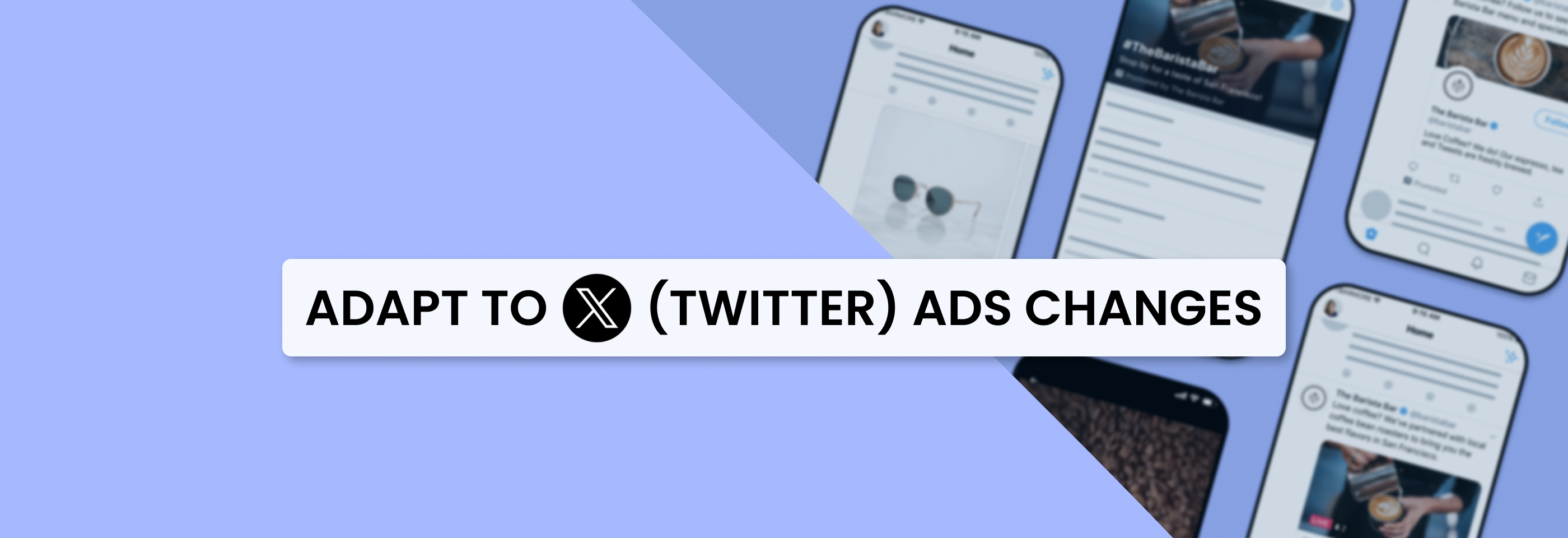
X (Twitter) has seen a dramatic shift over the past few years, with some changes that have not been particularly positive for businesses that have used the platform for running their ad campaigns.
In this article, we’ll delve a bit into the current state of X (Twitter) advertising, the platform’s issues and how it’s trying to solve them, and explore how businesses can still achieve advertising success despite the turmoil.
What’s happening with X advertising?
Let's talk about the elephant in the room: many big-name advertisers have stepped back from advertising on X. For example, Kantar's research shows that 26% of marketers plan to cut ad spending on X in 2025.
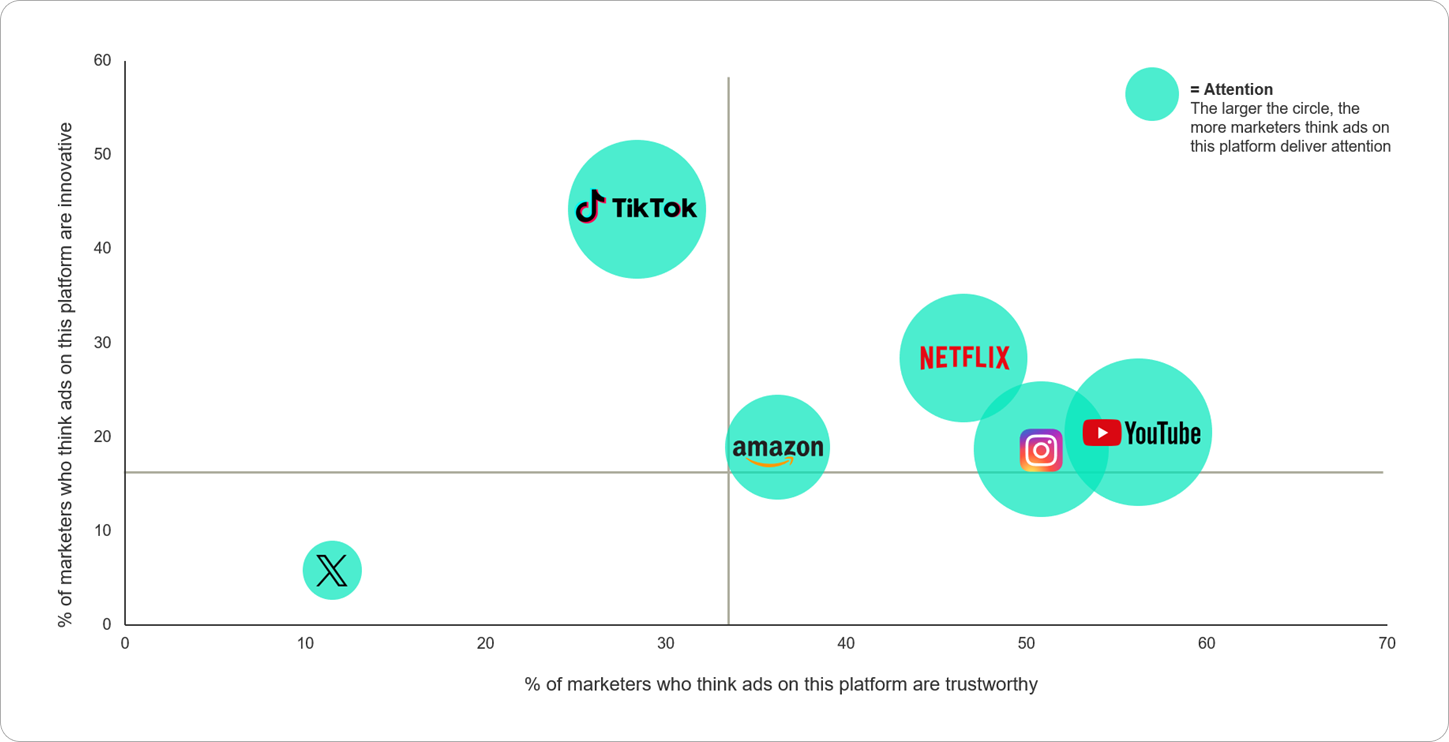
Source: Kantar
This shows a significant drop in trust and rising concerns about brand safety, especially amidst the loosened content moderation. The platform’s revenue has dropped 53% from last year, which puts it in a precarious financial position.
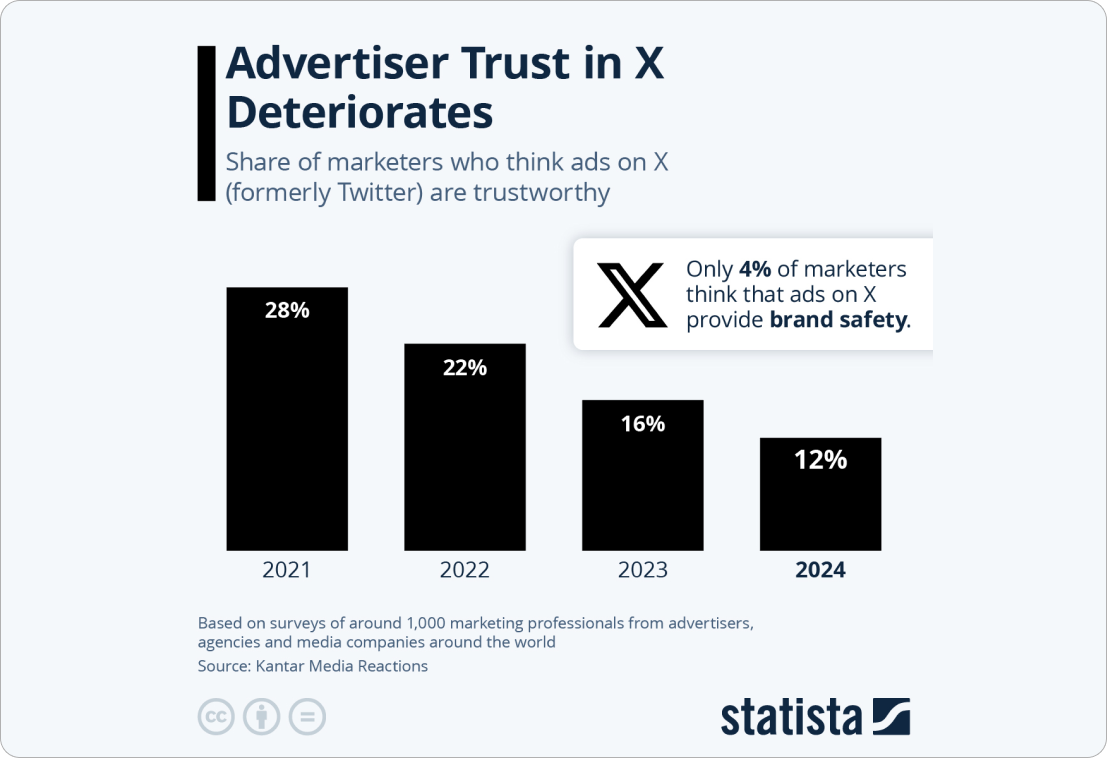
Source: Statista, based on Kantar Survey
But it's not all doom and gloom: X is trying to turn the situation around. Just recently, X introduced a new version of their advertising platform that uses AI to help businesses start advertising more quickly, target relevant audiences, optimize bids, and track ad performance much more easily. While these features will be available only to select new advertisers for now, X promises total availability in the future.
Basically, X is trying to catch up with advertising giants like Meta or Google, both of which already offer a lot of advanced AI features to advertisers. Whether these AI updates will outperform manual targeting, remains to be seen.
Why do brands continue advertising on X (Twitter)?
Despite dropping revenues and the mass exodus of marketers from X, some big brands like Disney and Warner Bros. still run X ads, even though they're spending a lot less than just a year before. Small businesses are also advertising on X, which is why the platform makes efforts to introduce special features geared towards them.
So, why do these businesses still use X advertising, considering all the platform’s issues? There are several key reasons:
1. Audience reach
X still commands a global audience of over 500 million active users. Even if many users choose other platforms over X these days, the userbase is still massive, and businesses don’t want to miss out on it.
2. Lower competition
As more advertisers pull out of X advertising, competition for ad space is decreasing. This potentially means less clutter and more visibility for the brands that choose to stay, including the small businesses.
As a consequence, advertising costs on X also become more affordable, which means that you don’t need to make a big financial commitment to leverage the platform for running your ads. With fewer competitors, you can secure premium ad placements at lower costs and achieve an optimal ROI.
3. Real-time engagement
One of X's unique features is its capacity for real-time engagement. Businesses can interact instantly with their audience, jump into trending topics, address customer feedback, etc.
This helps build stronger, more personal relationships with customers and gauge their reaction to your ads. You don’t have to wait for weeks or months to analyze what they think about your ads because they’ll tell you so right in the comments.
4. New advertising tools
As we’ve mentioned, X is actively trying to introduce new advertising features and tools, including AI ones, to avoid being left behind by the advertisers and other platforms where they choose to go.
Now, X has a pretty strong motive to innovate, which means that the advertising experience might become easier and smoother – a win-win situation for both parties involved. This, of course, depends on whether X can find the capacity and resources to roll out these innovations.
Overall, even though X is facing tough times, there are still multiple reasons to run X ads.
Should you advertise on X (Twitter)?
If you’re still thinking about whether the platform is worth your investments or not, take a careful look at what you're aiming to achieve. Here’s how to think it through:
1. Evaluate your goals
What type of product/service are you advertising? Is there a particular group you're trying to reach?
For example, products and services that need quick attention or appeal to young, tech-savvy people usually do well on X. This includes tech gadgets, games, apps, online classes, movies, fashion items, lifestyle products, etc.
Based on your product/service, check if X’s userbase matches it. For example, if you’re selling a new productivity app, X has lots of people who might love it. But if your product or service is aimed at older adults or covers more traditional topics, X might not be the best choice unless you find a clever way to make it appealing to X’s users.
2. Weigh risks and rewards
It's crucial to balance the benefits against the potential downsides. While X's reduced competition for ad space can mean more visibility and lower costs, the platform's ongoing issues with content moderation could pose risks to your brand's reputation. Make sure the potential for increased engagement is worth the risk of association with less controlled content.
3. Test and learn
If you’re on the fence about running X ads, why not start small?
You can launch a few low-cost campaigns to see how they perform: this approach lets you dip your toes in without a huge commitment and gather data and insights in the process. If the results are promising, consider scaling up your presence on X.
This method helps you manage risks while still exploring the potential benefits of advertising on X. It’s also one of the ways of maintaining at least a small presence on the platform, which you might benefit from later.
Now, let’s go through the main strategies that can help you make sure that you only run effective X ads.
X (Twitter) advertising best practices: how to run effective ads
1. Leverage the newest AI features
If you decide to go on with running X ads, make sure you’re using their latest AI-powered tools to save some time and get better results.
Here are the most recent advertising features introduced on X:
1. AI-powered targeting
AI automatically picks the right audience for your ads based on their interests and behavior, so you won’t need to manually adjust targeting settings. If you’ve ever found yourself getting stuck with all the targeting details, this might be the perfect solution for you.

X is promising to introduce several AI tools for advertising soon.
2. Automated bid optimization
AI can also help you adjust your bids to get the best return on your investment (ROI) based on ad performance. Instead of manually changing bids, you can rely on AI to get the best deal on your ads.
3. Automatic tracking pixel creation
X now also helps you set up tracking pixels to measure how well your ads are performing. Setting up pixels can be tricky and a lot of things can go wrong (you might miss a lot of important data!), so AI taking care of it automatically can be useful for most advertisers, especially small businesses.
4. Quick campaign launch
Just like other platforms, X is trying to make the advertising process as easy and smooth as possible. With the help of AI, you can set up your ads very quickly without running into numerous difficulties or having to specify too many details. It’s a simple solution to make it easy for you to start.
X also provides 1-Click DM support these days (at least that’s what they state): if you need help, you can reach X’s customer support with just one click.
2. Use engaging ad formats
Just like on any other advertising platform, you have to be creative and engage your audience if you want to see the results.
While all ad formats are useful, some can generate more engagement and interaction than others. They're perfect for sparking conversations and making your audience feel closer to your brand.
Here's a rundown of some of the most engaging ad formats you can use on X:
- Vertical video ads: they are immersive and engaging, which makes them a top choice if you want to grab user attention quickly. You can include a call-to-action button and drive traffic directly to your website or app.
- Carousel ads: if you have products to show, use carousels and link each slide to a unique URL if needed. It's a great way to let people get familiar with your offers without overwhelming them – they can always choose to simply swipe the carousel without leaving X.
- Amplify ads: these ads leverage the credibility and creative power of popular X creators to help you extend your reach. You can make your business come across as more authentic and tap into the creator's audience, aligning them with your brand. Features like auto-reply DMs and Q&A formats can also be the driving force for more engagement.
- Timeline and Trend Takeover ads: if you want maximum visibility and you’ve got the budget, Timeline Takeover ads will make your ad the first thing users see when they open X. Trend Takeover ads, on the other hand, appear in the "What’s Happening" section and are tied to trending topics – they’re highly relevant and engaging, getting you as much attention as possible.
- Dynamic Product ads: like on other platforms, these ads automatically show products from your catalog that the user is most likely to be interested in – if you figure out your target audience (or let X’s new AI tools do it for you), you can get more people clicking on your ads.
- Branded Hashtag ads: hashtags are also big on X (Twitter), which means you can create your own branded hashtags and create some buzz for your business. It’s a fun way to get people talking about your brand and motivate them to make UGC, which is as engaging as it can get.
If you pick the right format, you can get thousands of eyes on your business and drive whatever action you want – just make sure the content of your ads is up to your audience’s standards. Also, check one of our previous articles to learn more about X (Twitter) ad specs since size and other ad requirements are just as important as the content.
3. Tell a story through your ads
Even if you chose the most engaging ad format out there, you still might not see the results you’re hoping for if your ads feel boring.
What can you do to capture and keep your audience's attention on X? The short answer is to tell a story.
Storytelling is one of the best strategies no matter where you’re advertising, especially if you use a series of connected ads. Here's how to make it work:
- Keep your audience hooked: start with a story and let it unfold across multiple ads. Keep them intrigued by making them follow the plot from one ad to the next. Every piece of your series will pull them deeper into what you have to say with each new segment.
- Lead them along: you can combine selling with storytelling, guiding your viewers through their purchase journey with your ads. Introduce them to your business, light up their interest with the benefits in the next ad, tackle their doubts in follow-ups, and seal the deal with a strong call-to-action. Don’t forget to retarget people who engage with your ads at every step.
- Ramp up engagement: get your audience talking with you by using polls, quizzes, or encouraging comments and shares. Ask relevant questions that can spark a conversation, tease your upcoming launches and story updates, and keep the interest going.
- Customize your messages: tailor every part of your ad series to attract different segments of your audience. You can start with broad messaging/topics to pull in new people and get specific later to keep the interested ones coming back for more. Knowing your target audience well is a must if you want to do this.
- Let creativity flow: the best part about storytelling through sequential ads is letting your creativity out. You can tell a heart-tugging story, crack jokes, let people get a sneak peek behind the scenes of your business, etc. Each ad is a new stage to show off a different angle of your brand’s personality or product benefits.
When you’re creating ads that tell a story, make sure to split it into separate coherent chunks that can either be their own stories or just the steps in the story’s progression. As your audience will see different stories or different parts of one story over time, they’re more likely to remember about your brand.
Also, map out the main points of your story and figure out how many ads you’ll need to tell it well. Think about what you want your audience to do after each piece and smooth out the transitions – proper planning makes sure each ad not only stands alone but also builds up the bigger picture.
4. Promote your hit tweets
One of the most strategic moves you can make for your X (Twitter) presence is to leverage your organic presence if you have one. If you already have some high-performing tweets, you can promote them through paid promotion and significantly extend their reach well beyond what organic results could ever achieve.
First, you need to spot your winners. Check your organic post analytics and find the top-performing ones: which tweets got the most likes, retweets, and comments? Which ones brought more relevant followers to your account? These numbers will tell you exactly what works for your audience, so you can amplify it further.
Then, boost the best tweets. It’s pretty easy and fast to do it, but make sure that you’ve got enough budget – only then you’ll see real results. Finally, keep tabs on who's interacting with your promoted tweets: retarget them with more ads or invites to follow you. Turning casual likers into engaged followers is how you start building a stable audience that you can convert into paying customers.
Basically, boosting your organic posts can help you reach more people, get more engagement, and thus drive a bigger brand impact. Another great thing is that you’ll be spending your budget on what has already proven to work – you don’t even have to test it.
5. Boost your ads with automation
Let's face it: managing ads manually can be a real challenge. And if you’re already on the fence about whether to run X ad campaigns or not, having to spend your time managing them can be a dealbreaker.
That’s where ad automation comes into play, giving you the ability to run your campaigns without the extra work. With the help of automated rules, you can make real-time adjustments to your campaigns based on how they're performing.
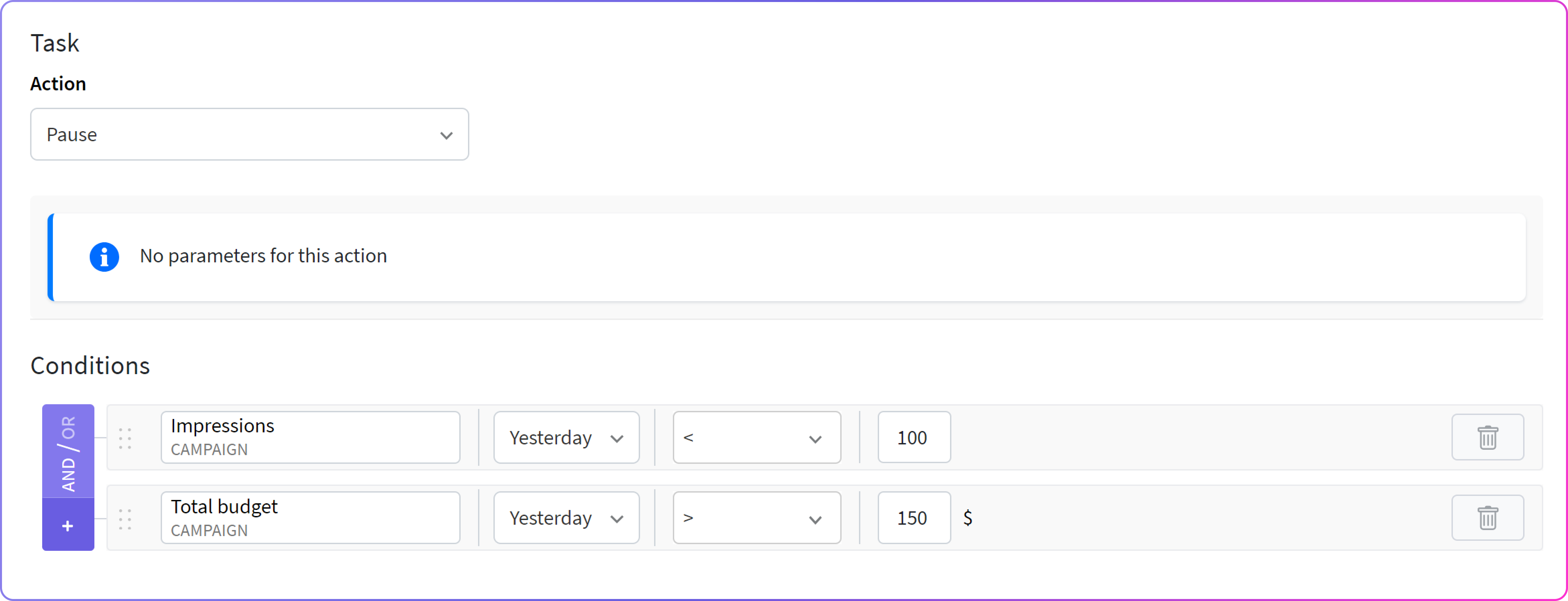
ConvertBomb helps you set different types of automated rules for managing your X (Twitter) ad campaigns.
You can automate a lot of things: automatically boost your budget on a well-performing ad that's getting lots of clicks, scale back on one that’s not doing so well, and so on. This saves you time and helps you optimize and scale your ads with ease, which is especially needed as your campaigns grow.
Here are some pro-tips for using automated rules the right way:
- Stack your rules: layer different rules to tackle various aspects of your campaign, like adjusting bids in one and pausing low performers in another;
- Experiment: use automation when you’re testing different ad versions. It’s a speedy way to pause winning versions and pause the losing ones;
- Learn and adapt: regularly review the outcomes of your automation tactics, see what works and what could be a bit better, and refine your strategy.
Embracing ad automation on X can make your campaigns a lot more responsive and effective, giving you a better ROI in the process. It's about making your campaigns work better with less effort from you.
Recap
Despite some rough patches and decreasing trust from big-name advertisers, X (Twitter) still offers solid opportunities for brands that tweak their strategies right. The platform is also trying to innovate with AI tools, showing it’s still in the game for both big players and small businesses alike.
As X evolves, you need to stay flexible and ready to experiment. X’s blend of challenges and opportunities, if navigated wisely, can give you great rewards if you engage with its unique features and use proven advertising strategies.

